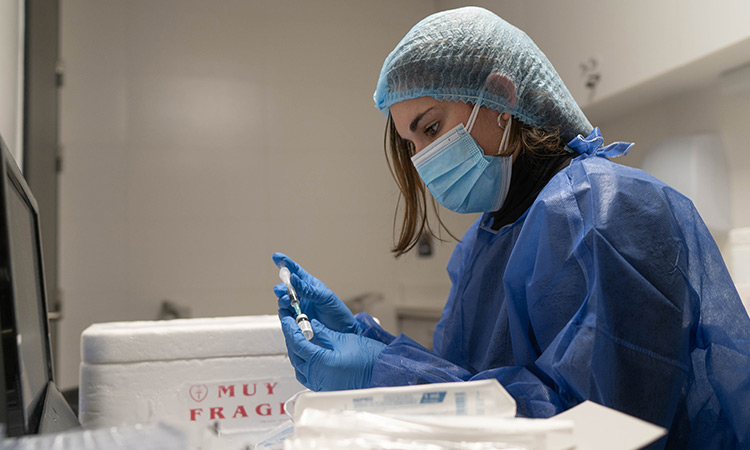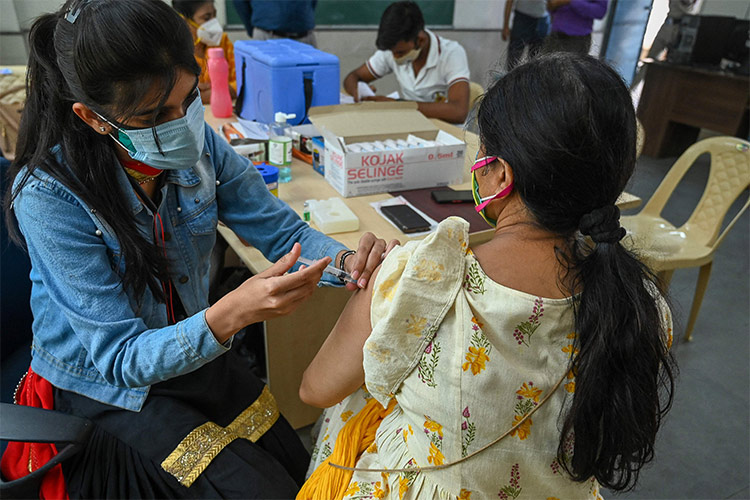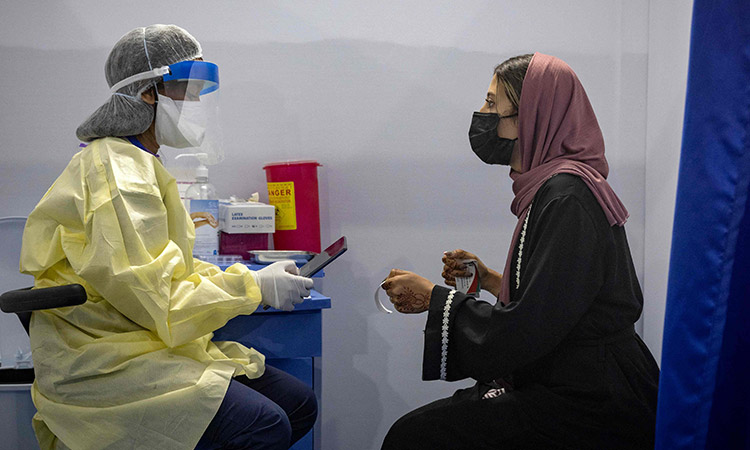After Covid success, RNA vaccines may be here to stay

University of Pennsylvania immunologist Drew Weissman poses at his home on Nov. 9, 2020. File/Tribune News Service
Tom Avril, Tribune News Service
When Drew Weissman first started injecting mice with genetic molecules called messenger RNA, it did not go well. Many of the animals became overwhelmed with harmful inflammation, and some died.
But Weissman solved that problem with a bit of clever biochemistry 15 years ago, working with then-colleague Katalin Kariko at the University of Pennsylvania. Now their work forms the backbone of two vaccines for COVID-19, including the one for which dramatic early results were announced this week.
The vaccine made by Pfizer Inc. and the German firm BioNTech SE, where Kariko now works, appeared to reduce the risk of illness by more than 90%, though the results were based on fewer than 100 confirmed cases of the disease. As the trial continues, some physicians are reserving judgment until they see evidence that the drug helps the elderly and others who are more vulnerable.
No RNA-based vaccine has been approved for any disease. Still, with no serious side effects reported thus far in thousands of volunteers who got the Pfizer drug, the findings are a sign that after years of uncertain promise, RNA vaccines may be here to stay.
The advantages of RNA could extend well beyond the rapid production of vaccines. As millions of high school students learn every year in biology class, the twisty molecules contain recipes for making proteins: the building blocks of life. In theory, that means they could be used to treat any number of diseases in which a person’s natural proteins are deficient in some way.
Some researchers are developing RNA therapies for cystic fibrosis, enabling patients to make functional proteins that would clear their lungs of the harmful mucus that characterizes the disease. Weissman’s lab, at Penn’s Perelman School of Medicine, is developing RNA as a possible treatment for sickle cell anemia.
The groundwork for these advances has taken decades, with scientists in many labs having to clear technological hurdles too numerous to describe. Still, a series of technical advances that Weissman and Kariko made, starting in 2005, is considered to have removed a major stumbling block.
Derrick Rossi, who co-founded Moderna Inc., the maker of the other RNA COVID-19 vaccine now being tested in humans, says the two scientists deserve the Nobel Prize in chemistry.
“I would put them front and center,” he told STAT, a media outlet that focuses on medicine and life sciences. “That fundamental discovery is going to go into medicines that help the world.”
The fruits of the research at Penn were licensed to two biotech firms, which in turn sub-licensed the intellectual property to both Moderna and BioNTech, Pfizer’s partner. Should either vaccine be approved, the university stands to make money, though the details are confidential.
Weissman, who came to Penn in 1997 after working for Anthony Fauci at the National Institute of Allergy and Infectious Diseases, is quick to share credit with other scientists. But in an interview this week, he acknowledged that the RNA research by him and Kariko has had an impact.
“When Kati and I figured how to make it noninflammatory,” he said, “then it took off.”
When RNA is used in a vaccine, the basic concept is the same as with any vaccine: expose people to a virus (or a protein fragment of it) in such a way that they do not become sick. The immune system responds by making customized antibodies and other defenses, and it “remembers” how to make more in the event of a real infection.
In most traditional vaccines that protect against viral infection, this exposure is achieved by administering a weakened or inactivated form of the virus, or some of its component proteins.
The Pfizer and Moderna COVID-19 vaccines, on the other hand, prompt the production of these proteins inside the person’s cells. The necessary genetic code is packaged inside tiny balls made of waxy molecules called lipids. Recipients get two doses of the vaccine, injected several weeks apart.
The lipid nanoparticles fuse to the membranes of the person’s cells, and their cargo — the recipe for the familiar “spike” proteins that protrude from each coronavirus particle — is delivered inside.
Weissman started using these lipid nanoparticles 10 years ago to deliver RNA into the cells of lab animals. Others had explored the concept before that. But the bigger challenge, he said, was what he and Kariko achieved in 2005: tweaking the RNA itself.
Scientists had been injecting lab animals with RNA since 1990. Yet many gave up on the concept after finding that the animals’ immune systems recognized the injected molecules as foreign — resulting in harmful inflammation and even death.
Among physicians impressed by the RNA vaccine approach is one who volunteered for the Pfizer trial: Robert L. Kruse, a pathology resident at Johns Hopkins Medicine.
Dozens of other COVID-19 vaccines in development rely on exposing recipients to that same spike protein for which the instructions are spelled out in the RNA products. Among them is one made by Inovio Pharmaceuticals of Plymouth Meeting, which placed its protein recipe in DNA, not RNA.
But that approach poses a bigger technical challenge, as the DNA must be delivered first through the person’s cell membrane and then into the nucleus of each cell, Kruse said. Not so for the RNA vaccines, which contain a form of the molecules called messenger RNA (mRNA), easily delivered by traditional injection.
“The DNA has to get through the first layer and then through the second layer,” Kruse said. “That’s actually pretty complicated. With the mRNA, you only need to get through the first layer.”
Indeed, the trial of Inovio’s vaccine is currently on hold, in part due to questions from the US Food and Drug Administration about the high-tech device used to deliver it — via electrical pulses through the skin.
No RNA or DNA vaccine has yet been commercialized for any disease. But the early results of the Pfizer product are encouraging, said John P. Moore, a professor of microbiology and immunology at Weill Cornell Medical College in New York.
“It’s hard to argue anything other than that being a good result,” he said.
Weissman already has his eye on a bigger infectious disease hurdle. In addition to the virus that causes COVID-19, two other dangerous coronaviruses have “jumped” from animals to humans since 2002: one that causes a disease called SARS (severe acute respiratory syndrome), and another that is abbreviated MERS (Middle East respiratory syndrome).
The Penn scientist, among others, hopes he can make a vaccine that would protect against all such viruses, not just one at a time.
“There have been three coronavirus epidemics in the past 20 years,” he said. “You would have to be foolish to think there isn’t going to be a fourth and a fifth and a sixth.”
The answer, he thinks, lies in RNA.







